The key part I picked up on here is that you’re feeling like self-milling for fun and profit isn’t really getting you where you want to be. You noted that
milling things seems to result in a lot of dead draws and poorly-allocated resources, so I’m going to try and riff off of that and rely on that shifting
the other big problem around – that you’re limited in your win conditions and always seem to find yourself going down the same path. If there were just
more productive stuff to do to begin with, it would be easier to shake it up and do more interesting things to close out a game – which would let
you play a different game every time, rather than fall into the boring death-spiral that many graveyard-centric decks fall into. After all, if you’re just
going to use the graveyard as a temporary way-station before a card makes it back into your hand or just goes right into play, it shouldn’t be surprising
that the best cards get leaned on pretty hard – your plan is to mill them over and over again, so it doesn’t matter that your deck will draw different
cards each game because the focus falls upon milling key cards instead.
To make Sidisi fun and interesting again, and the best there is at what she does (because what she does is so nice!), we’re going to
reorient away from milling yourself in order to access resources and instead focus on her ability to stock your graveyard in sheer quantity rather than
specific quality. You get her Zombie trigger no matter how many things you mill at the same time, so cards like Buried Alive aren’t special – self-milling
three creatures still only gets you one Zombie, so we want to mill more often instead of mill more aggressively. I like the idea of a bit of reanimation
added on for extra value rather than as Plan A, since you’re going to be milling yourself and others already, and I hate some of the
incredibly-obvious ideas that could go in here as well… like milling yourself excessively just to cast Praetor’s Counsel or anything involving Deadeye
Navigator.
Let’s start with a few slight alterations to your mana:
The key part I picked up on here is that you’re feeling like self-milling for fun and profit isn’t really getting you where you want to be. You noted that
milling things seems to result in a lot of dead draws and poorly-allocated resources, so I’m going to try and riff off of that and rely on that shifting
the other big problem around – that you’re limited in your win conditions and always seem to find yourself going down the same path. If there were just
more productive stuff to do to begin with, it would be easier to shake it up and do more interesting things to close out a game – which would let
you play a different game every time, rather than fall into the boring death-spiral that many graveyard-centric decks fall into. After all, if you’re just
going to use the graveyard as a temporary way-station before a card makes it back into your hand or just goes right into play, it shouldn’t be surprising
that the best cards get leaned on pretty hard – your plan is to mill them over and over again, so it doesn’t matter that your deck will draw different
cards each game because the focus falls upon milling key cards instead.
To make Sidisi fun and interesting again, and the best there is at what she does (because what she does is so nice!), we’re going to
reorient away from milling yourself in order to access resources and instead focus on her ability to stock your graveyard in sheer quantity rather than
specific quality. You get her Zombie trigger no matter how many things you mill at the same time, so cards like Buried Alive aren’t special – self-milling
three creatures still only gets you one Zombie, so we want to mill more often instead of mill more aggressively. I like the idea of a bit of reanimation
added on for extra value rather than as Plan A, since you’re going to be milling yourself and others already, and I hate some of the
incredibly-obvious ideas that could go in here as well… like milling yourself excessively just to cast Praetor’s Counsel or anything involving Deadeye
Navigator.
Let’s start with a few slight alterations to your mana:
Out:
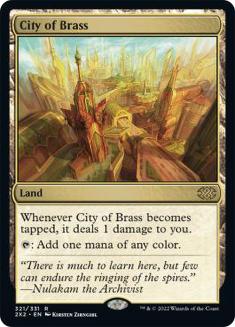
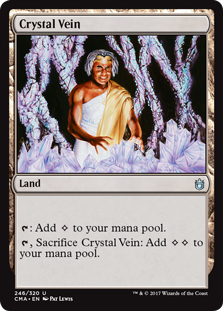
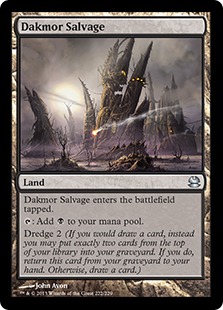
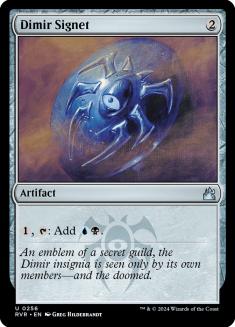
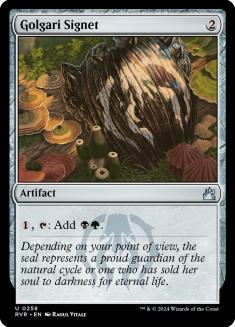
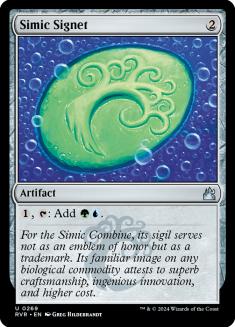
In:
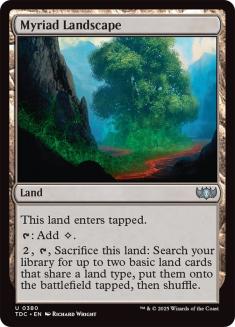
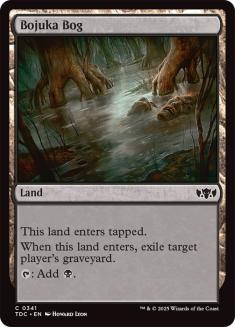
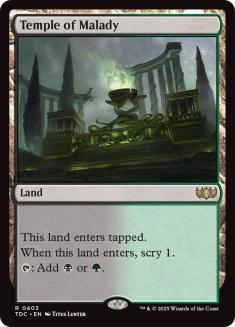
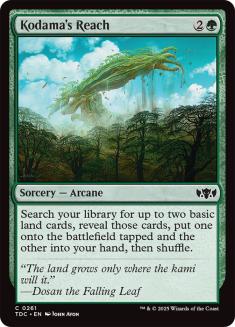
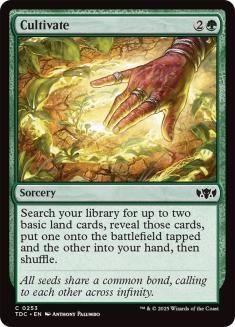
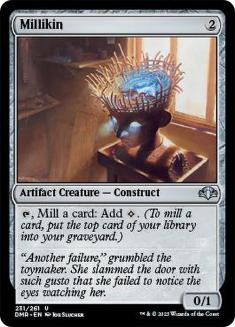
The Temple of Malady will turn out to be the priciest card we add to your deck, and it comes from playing the cycle-completion game – seeing what dual lands you’re already playing and then adding in any missing copies from those same cycles. The Bojuka Bog comes from the shift we’re making in this deck’s focus on controlling opposing resources – if you’re going to mill your opponents, you have to recognize the fact that for at least some of them, this is helping, not hurting. And if you’re going to sacrifice a land for fun and profit, I’d rather sacrifice Myriad Landscape than Crystal Vein. The other three shifts come from the fact that I like really stable mana and that tends to mean basic lands, so between actual green ramp spells and relying on Signets, I’d advise you to pay a little bit of extra mana and make sure you always have access to those resources once you’ve invested a card in them. Sure, you won’t ramp into a turn 3 Sidisi very often, but that’s not really a problem as far as I’m concerned… this deck wants to do its thing well, not necessarily faster, and since it can build to a powerful lategame, we want to play the cards that make sure your mana will always be there instead of the cards that maybe sometimes let Sidisi come down a turn faster.
Normally I shift around the spells next and the creatures last, but this time that feels wrong – so let’s move on to the creature base, as it’s where the most significant realignment in the entire deck comes from.
Out:
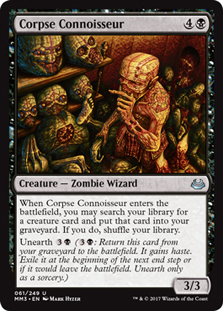
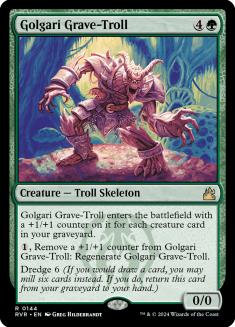
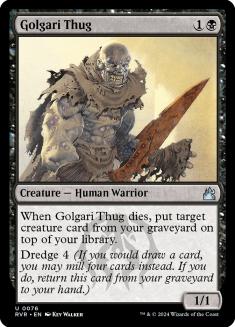
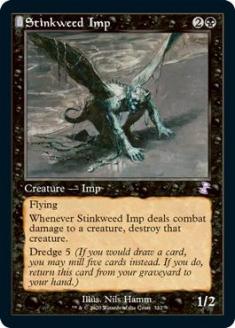
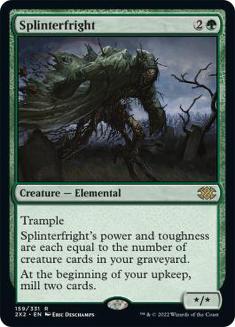
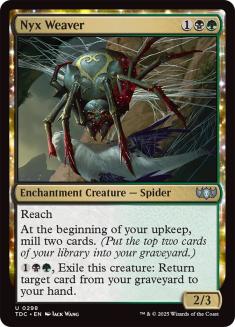
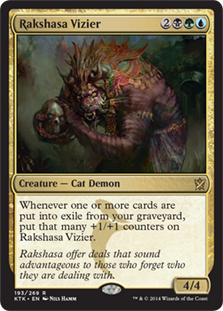
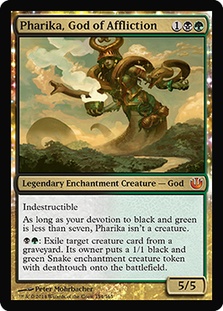
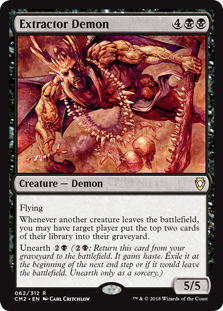
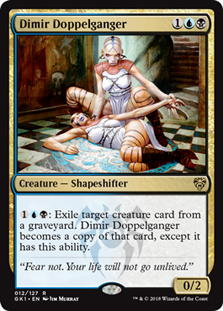
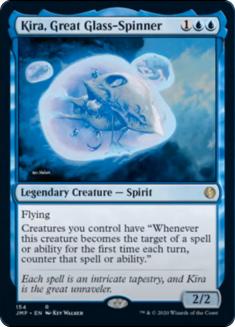
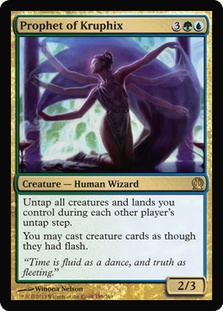
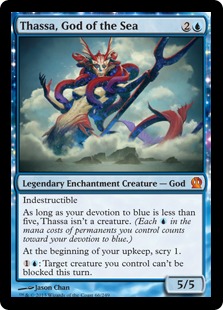
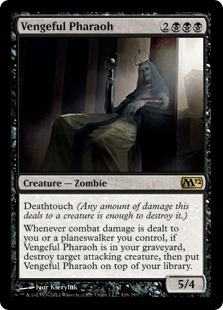
Some of these cuts were made just because I wanted to shy away from over-focusing on the “stock the graveyard” theme. We want to do that, yeah, but not to the excess of doing anything else – so skipping draw steps to dredge is right out, and tutoring (a la Corpse Connoisseur) is right out. Anything that was just dead weight by itself likewise got cut – I don’t really see what Thassa was doing here, since your devotion is highly unlikely to turn this into a monster, the Scry doesn’t put a card in your graveyard (… as your similar effects do), and the unblockable ability is not that relevant. Oh, and we’re cutting Prophet of Kruphix because screw that card. No really. Just we’re done with it now already, it’s boring and we’re over it.
I know that I am going to want two more spells than there had already been slots for, and we’ve already snuck a creature in when we put that Millikin in, so we have just cut fourteen cards and have room to fill eleven slots back in. I am thinking of these cards specifically in groupings, fleshing out the themes and aspects David mentioned as important to him – and the first of them was the “Interesting and Appealing Legends” theme:
In:
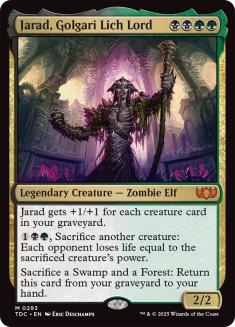
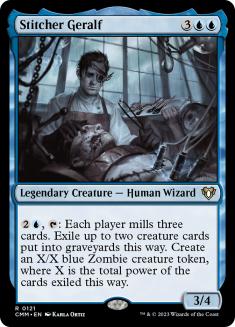
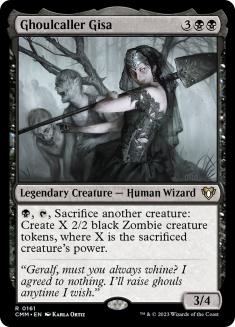
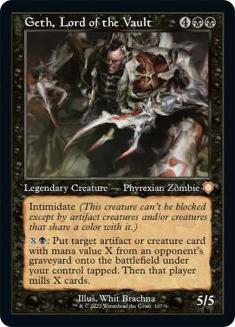
David mentioned more-generically that he wanted to play some of the new Commander 2014 legends, and since Titania didn’t really work very well in this deck, I took that to be a direct request for Geralf and Gisa, the two awesome and incredibly fun legendary creatures that Jess got to work with in our continuing series over the past month or so, “Better Know A Commander 2014 Legend.” I took the liberty of adding two other potential commanders that seemed like they’d fit with the deck’s facets – Jarad is strong with the deck’s mill theme, comes back on-command later in the game, and can function as a sacrifice outlet, which is play space David wanted to work into for fun and profit, while Geth, Lord of the Vault is a reanimation-ish creature that actually remains interesting in game after game because it reanimates your opponents’ stuff, not your own, so you will keep getting to play with different cards each game. A significant component of this deck seems to involve being able to exhaust an opponent of all of their resources and then maybe beat them up with them a little, and that is what Geth has written on his resume right there, “will murder people with their own stuff, some mana needed.”
Milling people can be problematic, so you want to be able to solve problem cards in opposing graveyards… and both of these potentially go with your “build a better monster” aspect, asking how you get paid for all of the self-milling you do:
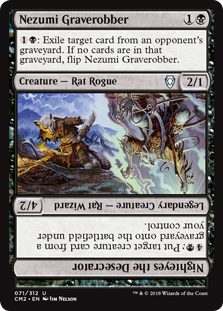
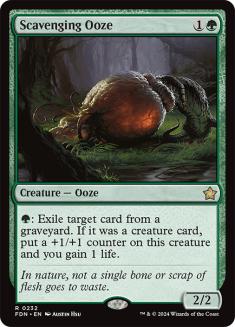
Geth can theoretically count in here too, since he does remove a card from a graveyard, but he does so by milling the opponent further so it wasn’t exactly the same here. Graverobber can potentially flip and turn into a reanimation station, letting you play with your own stuff more (booooo-ring) or your opponents’ dead stuff (way more interesting!) and getting a really attractive rate as you try to get paid off for milling folks (yourself included).

This one didn’t quite fit into a category, or perhaps it did – with Ghoulcaller Gisa and Jarad – that seems neglected because unlike those awesome fun legendary sacrifice outlets, this new Commander 2014 card is no legend. It’s a sacrifice outlet in a deck that is potentially going to be able to profit off of those quite well, and has its own fun interaction built in to pay you back for spending your resources on building a better monster. It’s not as impressive a sacrifice outlet as the other ones we have going for us, but if you want to draw one with regularity you have to include a fair chunk of them, and this still scales pretty well even if it does take a bit of mana to use it repeatedly.
Our last four cards pay us off for getting enough graveyard resources or more than our opponents, letting us shift away from self-mill as its own mindless goal and instead focus on relevant thresholds. This lets us set near-term goals and manage our resources accordingly, and can also let us trip up our opponents’ resources as a way to keep our cards relevant instead of having the solution to everything be just “mill harder.” Your inclusion of Gaea’s Blessing and Kozilek suggest that you understand mono-Mill Hard-control is a boring and uninspired archetype, so we want a few more cards like your Oversold Cemetery – things that ask us to hit a certain threshold in order to pay us back for that milling we did, rather than just ask us to focus monomaniacally on it and assume everything will work out accordingly.
In:
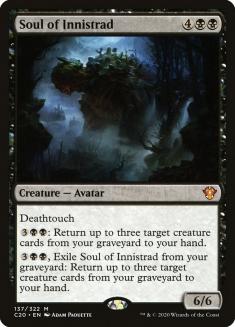
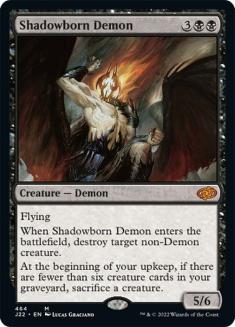
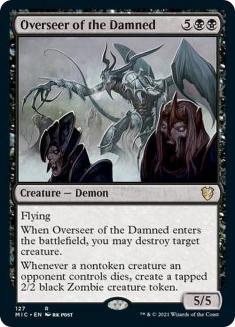
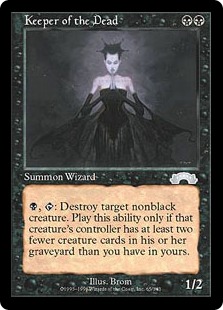
Each of these has their own built-in thresholds and toggles. Overseer of the Damned is a removal spell that comes with a built-in zombie-production facility, allowing us an entirely new way of gaining access to those sweet, sweet 2/2 Zombies that we’re relying on Sidisi to produce, so we can shift our focus to board control somewhat when we’ve drawn it instead of trying to profit just by milling, and Soul of Innistrad can also shift the cadence of the game when we draw it by letting us turn all of those milled resources back into cards in hand if we want to (and not in that boring Praetor’s Counsel way). Unlike that Praetor’s Counsel, this does something from the graveyard if we just mill it instead of draw it, because the M15 Souls are all fancy like that – it gives us something like another shot at milling Genesis, which is a tough act to follow, so anything that can even get us halfway there is already pretty impressive.
Keeper of the Dead is another creature that can function like a removal spell, and its relevant number is “two more dead creatures than our opponent has,” so we can expect to get a lot of mileage if we’re doing our thing and our opponent is not likewise milling themselves for fun and profit. This lets us get some much-needed board control, since your original build focused mostly on your side of the table and not so much on the opponents’ stuff, while also shifting the relevant metric from “mill as hard as possible” to “mill this hard please.” And Shadowborn Demon does the same – another removal spell, this time stapled to a cheap, fat flier – that sets its personal threshold at “at least six creatures in the graveyard” in order to circumvent the sac-a-creature drawback. (And if you can’t circumvent that drawback? Well, you did want more sacrifice outlets…)
This leaves us just the spells to shift around, and we needed to see what this new creature base looked like before we got there in order for some of these choices to make sense. We begin with the cuts:
Out:
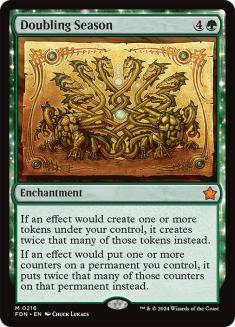
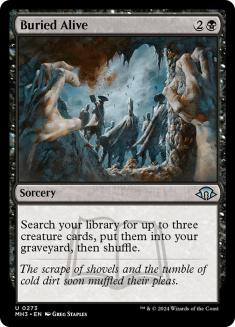

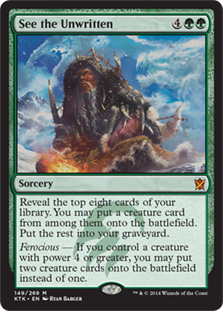
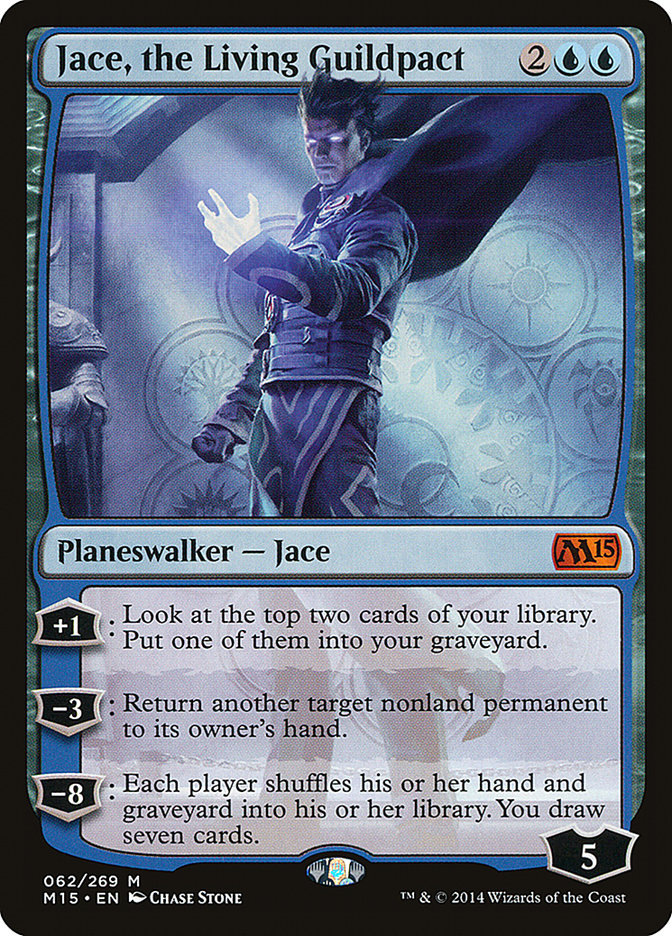
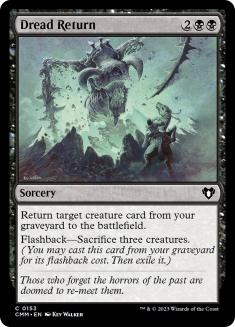
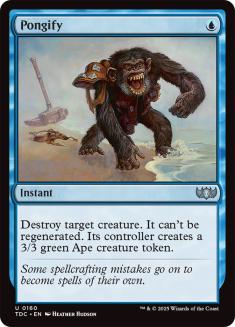
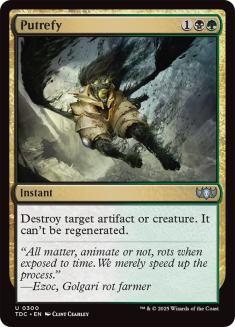
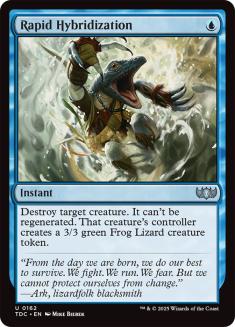
Since we have three slots floating, we have twelve spells to add back in altogether at this point, and we need to accentuate the shifts we’ve made in the creature base and its focus and build in some more support, as well as keep riffing on those themes if we can. Let’s start with the reanimation suite:
In:
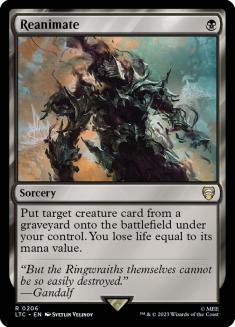
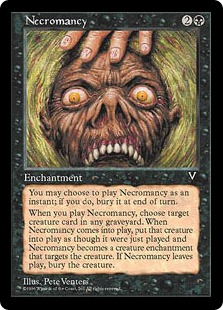
A little bit goes a long way, and these three are all chosen as the best-of’s. Reanimate is the cheapest and most efficient, letting you trade off life instead of mana so long as you’re willing to take the pain, while Beacon of Unrest is expensive but flexible… and even extra-reliable, since it shuffles back into your deck to potentially allow for a future draw step to yield another shot at raising the dead. Necromancy is personally my favorite reanimation effect in the format since instant speed is just so very relevant at most tables, to the point where you won’t even mind that the creature goes away at end of turn if you need to use that mode – adding that flexibility is game-winningly good, and not because you expect to untap and attack with the monster, just getting the comes-into-play trigger or even just building a surprise blocker is where you get all the value from the instant-speed option. I don’t even know when the last time I cast Necromancy on my own turn was, so it’s my clear favorite for a reason.
Next we have the extra removal:
In:
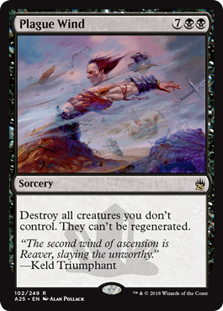
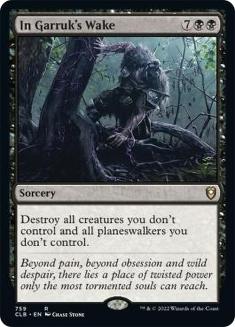
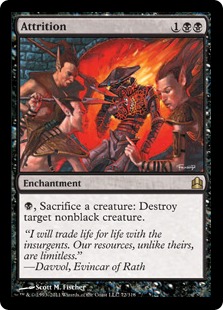
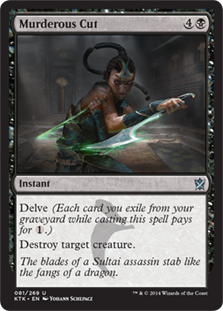
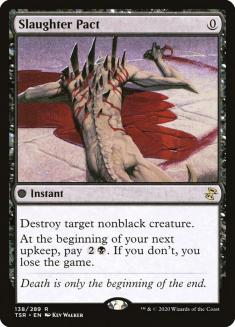
Murderous Cut should be a one-mana removal spell just as well as Pongify and Rapid Hybridization had been, but without the pesky “giving your opponent a
3/3” thing that we get to avoid because delve is practically free for this deck. Actual-free is an even more attractive price for that second
removal spell, so I’m inclined to replace it with a Slaughter Pact, though I do sometimes like Snuff Out instead (we’re not especially focused on making
sure we have a Swamp in play, for this deck…) or Submerge (because most metagames can be relied upon to ensure one of your three opponents has a Forest).
We can get both a sac outlet and a repeating removal spell thanks to Attrition, which is under-used in this format since most players tend to
focus on Grave Pact instead, and I wanted some mass removal that would leave our side of the board alone so I went big and went greedy and picked a pair of
nine-mana haymakers to give the deck something crazy at its top end. In Garruk’s Wake and Plague Wind both empty opposing boards and let us take a
newly-dominating board position right away, so they should help supplement the fact that this deck is otherwise quite light on removal… you can be light
on removal if your eventual plan is to just wipe your opponents’ boards no matter how crazy they may have gotten in the meantime.
Two of our last four additions are included as sacrifice outlets, as we add Altar of Dementia and Spawning Pit as sac outlets of choice. Altar is
especially strong here because we want to mill ourselves and get more Zombies, but we also want to mill our opponents sometimes, and if we plan correctly
we can just sacrifice our board to knock an opponent entirely out of the game. While that’s costly for the first opponent eliminated, it’s perfect for the
last one, and it’s pretty awesome with this next addition: Tombstone Stairwell. I’ve been focused on Altar + Tombstone for something like fifteen years
now, somewhere in the casual-minded back of my brain somewhere, ever since I tried goofing around with it in a Necratog–Ertai’s Familiar-based shell that
riffed on the strong points of an obscure, weird Mirage Block Constructed deck that has since been lost to the mists of time. Tombstone Stairwell is an
incredibly powerful way for us to get paid back for milling ourselves, especially with basically anything else that sacrifices things – Attrition
+ free warm bodies is a great way to mow down opposing boards, and with Tombstome + Altar of Dementia first you mill your own library to stock up on bonus
Zombies, then you feed them to the Altar to mill your opponent out at ludicrous speed since you get the extra bodies each and every turn – four free
Zombies per turn cycle per dead creature in your graveyard gets to be a pretty absurd number pretty quickly.
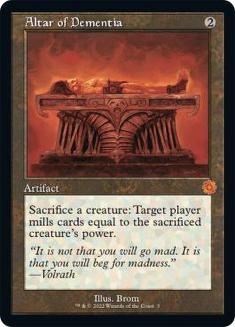
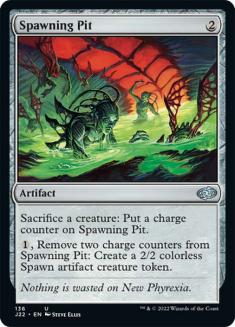
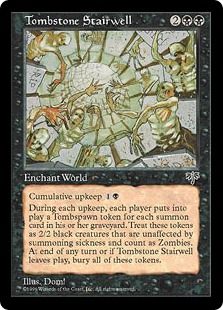
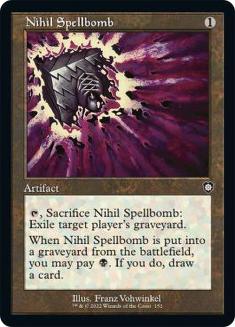
Oh. Or they could just beat down too – that also works. To help make sure that does work, the last addition is Nihil Spellbomb – you’ll have way more free 2/2’s than the opponent whose graveyard you just nuked. A little bit more graveyard control helps all the rest of our cards work
better, especially now that we’re building around mine-versus-yours thresholds instead of just “mill me as hard as I can” since that makes interacting with
our opponents more relevant and even more profitable. Having to pay attention to your opponents’ stuff and play an interactive game of Magic is
far more enjoyable than playing the dredge-Golgari Grave-Troll game, as anyone who has ever played Vintage or Legacy can well attest.
Putting it all together, we get the following:
Creatures (35)
- 1 Avatar of Woe
- 1 Nezumi Graverobber
- 1 Genesis
- 1 Lord of the Undead
- 1 Eternal Witness
- 1 Yavimaya Elder
- 1 Keeper of the Dead
- 1 Millikin
- 1 Lich Lord of Unx
- 1 Bloodghast
- 1 Kozilek, Butcher of Truth
- 1 Geth, Lord of the Vault
- 1 Necrotic Ooze
- 1 Sheoldred, Whispering One
- 1 Scavenging Ooze
- 1 Sewer Nemesis
- 1 The Mimeoplasm
- 1 Skaab Ruinator
- 1 Grimgrin, Corpse-Born
- 1 Deranged Assistant
- 1 Havengul Lich
- 1 Mikaeus, the Unhallowed
- 1 Diregraf Captain
- 1 Craterhoof Behemoth
- 1 Jarad, Golgari Lich Lord
- 1 Shadowborn Demon
- 1 Reaper of the Wilds
- 1 Nemesis of Mortals
- 1 Phenax, God of Deception
- 1 Soul of New Phyrexia
- 1 Soul of Innistrad
- 1 Ghoulcaller Gisa
- 1 Stitcher Geralf
- 1 Flesh Carver
- 1 Overseer of the Damned
Lands (37)
- 5 Forest
- 1 Llanowar Wastes
- 1 Underground River
- 4 Swamp
- 4 Island
- 1 Temple of the False God
- 1 Phyrexian Tower
- 1 Maze of Ith
- 1 Yavimaya Coast
- 1 Overgrown Tomb
- 1 Watery Grave
- 1 Breeding Pool
- 1 Urborg, Tomb of Yawgmoth
- 1 Tolaria West
- 1 Drowned Catacomb
- 1 Bojuka Bog
- 1 Command Tower
- 1 Hinterland Harbor
- 1 Woodland Cemetery
- 1 Nephalia Drownyard
- 1 Rogue's Passage
- 1 Temple of Deceit
- 1 Temple of Mystery
- 1 Opal Palace
- 1 Temple of Malady
- 1 Opulent Palace
- 1 Myriad Landscape
Spells (27)
- 1 Reanimate
- 1 Sol Ring
- 1 Gaea's Blessing
- 1 Necromancy
- 1 Kodama's Reach
- 1 Plague Wind
- 1 Oversold Cemetery
- 1 Crucible of Worlds
- 1 Beacon of Unrest
- 1 Spawning Pit
- 1 Mesmeric Orb
- 1 Tombstone Stairwell
- 1 Altar of Dementia
- 1 Attrition
- 1 Fact or Fiction
- 1 Life from the Loam
- 1 Slaughter Pact
- 1 Maelstrom Pulse
- 1 Eldrazi Monument
- 1 Cultivate
- 1 Nihil Spellbomb
- 1 Grisly Salvage
- 1 Deadbridge Chant
- 1 Hero's Downfall
- 1 In Garruk's Wake
- 1 Sultai Ascendancy
- 1 Murderous Cut

As always, for participating in this week’s Dear Azami you will receive a $20 coupon to the StarCityGames.com online store, and we’ve actually
kept it to a pretty light budget this week – none of the suggestions that fit this deck were that pricey, which is not always the way of these things. You
could get more spend-y if you wanted to, and to good effect, but it’s not actually required – I’d want to have a fair number of fetchlands in here to work
with that Life from the Loam and Crucible of Worlds, but the price per card is very high and as good as they’d be it doesn’t have to be a top priority, you
should mill enough lands often enough that both of those cards are good enough still. I’d lean harder, but then with my cardpool that’s also free – I’m
surmising that you have access to some expensive cards if you want them since there’s a Maze of Ith and a Crucible here, but since the large bulk of the
deck is actually pretty cheap, I tried to keep pace with the rest of it instead of keep up with the couple of expensive cards. We’re just over $60 today
and have built a pretty sweet deck with that $60, it’s just that if we wanted to fiddle with the mana more we could easily spend three times as much if we
wanted to.
Pricing them out individually, the substitutions were mostly pretty cheap but had a few pricey cards in there too:
| Card: | Price: |
| Bojuka Bog | 0.19 |
| Keeper of the Dead | 0.19 |
| Millikin | 0.19 |
| Nihil Spellbomb | 0.19 |
| Spawning Pit | 0.22 |
| Nezumi Graverobber | 0.37 |
| In Garruk’s Wake | 0.42 |
| Murderous Cut | 0.44 |
| Kodama’s Reach | 0.56 |
| Flesh Carver | 0.59 |
| Cultivate | 0.74 |
| Tombstone Stairwell | 0.75 |
| Myriad Landscape | 0.79 |
| Overseer of the Damned | 0.79 |
| Altar of Dementia | 0.99 |
| Jarad, Golgari Lich Lord | 1.49 |
| Shadowborn Demon | 1.49 |
| Stitcher Geralf | 1.49 |
| Soul of Innistrad | 2.03 |
| Ghoulcaller Gisa | 2.29 |
| Plague Wind | 2.39 |
| Attrition | 2.45 |
| Necromancy | 2.89 |
| Beacon of Unrest | 3.59 |
| Geth, Lord of the Vault | 5.05 |
| Scavenging Ooze | 5.59 |
| Reanimate | 6.65 |
| Slaughter Pact | 8.79 |
| Temple of Malady | 9.00 |
And that finishes out a delightfully-quirky and interesting Sidisi, Brood Tyrant build that had been in danger of being too repetitive – and too full of empty space besides, as the only rewards that it was really getting for milling itself was a few shots at a free Zombie. That’s all well and good, and obviously why you pick Sidisi as your commander, but if you’re dredging a Grave-Troll just to get a Zombie every turn, suddenly you’re forced to realize you’re actually trading your draw step for a 2/2 and it stops looking quite so free. This build has more interesting stuff going on, and way better ways to churn out more Zombies for fun and profit – and it’s more interactive too.
I’d wanted to add a bit of countermagic to the deck, since we’re blue, and thus, we just can if we want to, but I decided to take the lack of countermagic as intentional rather than shave off a few slots in order to fit in an Arcane Denial, a Soul Manipulation, and probably a Time Stop in the “something big that can solve weird problems” department. If you do want to find room for a bit more blue magic, those are the ones I’d suggest giving a try, but I felt like you honestly didn’t want them so I didn’t shoehorn my personal preferences into your Commander build.
Want to submit a deck for consideration to Dear Azami? We’re always accepting deck submissions to consider for use in a future article, like Adam and E’s Ghoulcaller Gisa deck or Remco and Aren’s Titania, Protector of Argoth deck. Only one deck submission will be chosen per article, but being selected for the next edition of Dear Azami includes not just deck advice but also a $20 coupon to StarCityGames.com!
Email us a deck submission using this link here!
Like what you’ve seen? Feel free to explore more of Dear Azami here, in the Article Archives! Feel free to follow Sean on Facebook… sometimes there are extra surprises and bonus content to be found over on his Facebook Fan Page, as well as previews of the next week’s column at the end of the week!
And feel free to check Jess’s own Command of Etiquette column on Hipsters of the Coast for more Commander and casual content.
